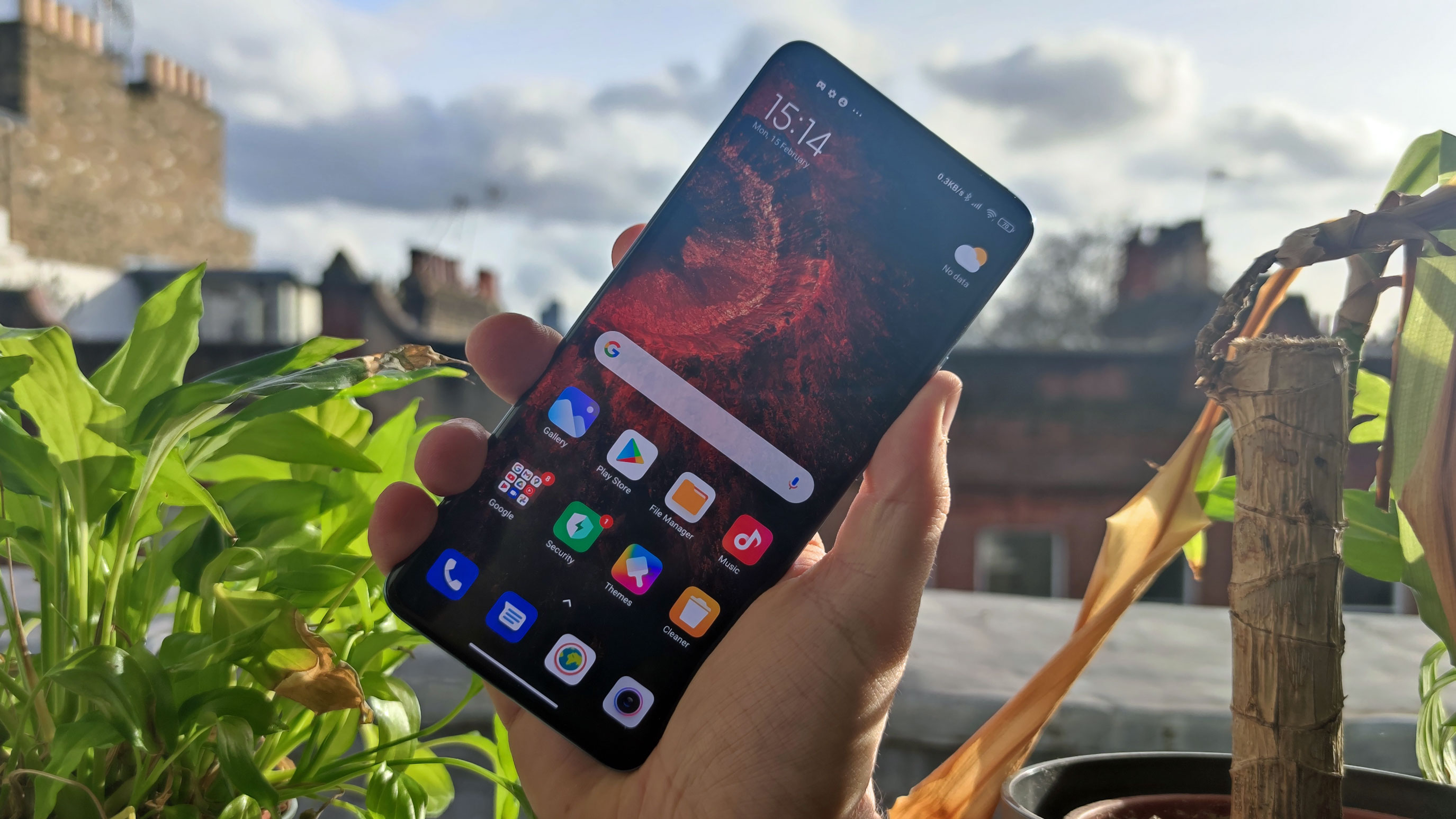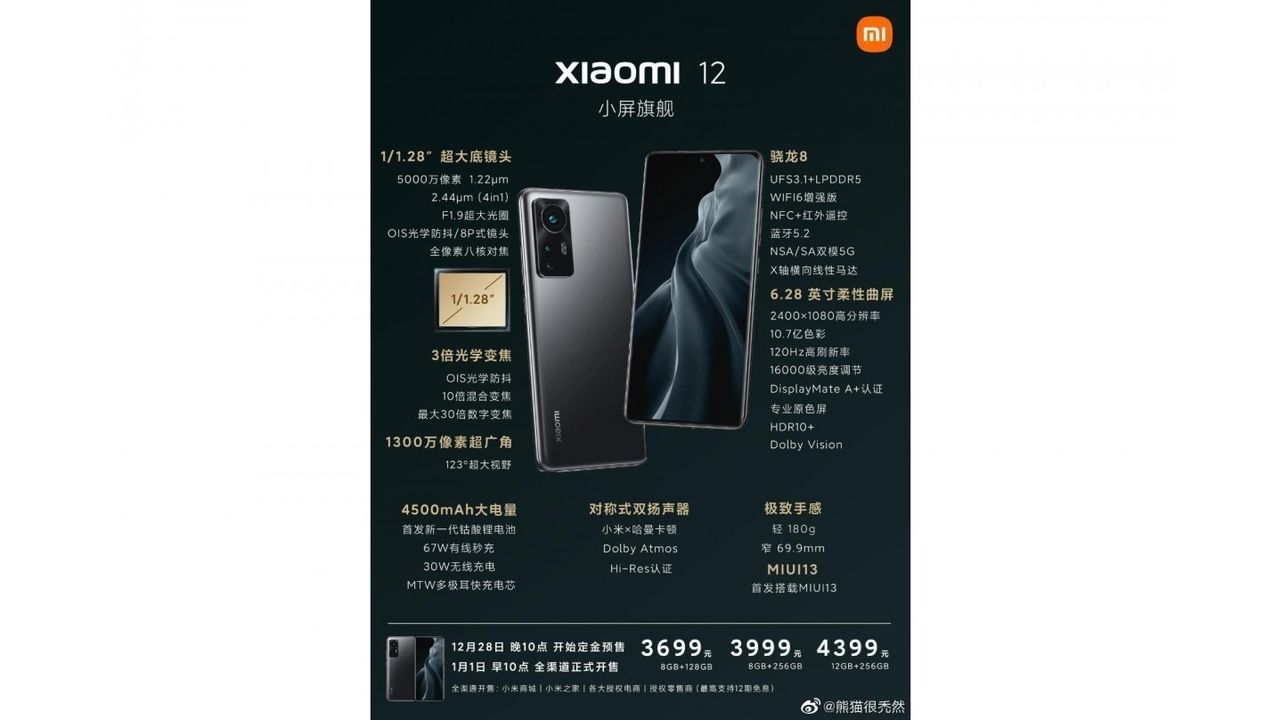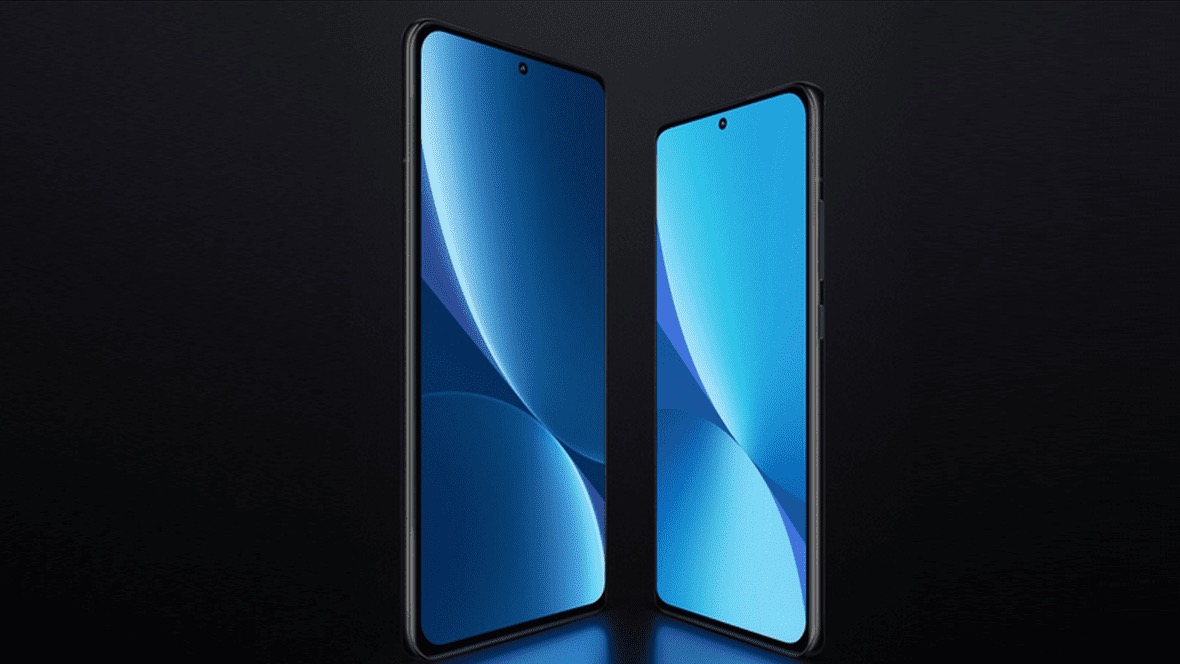Xiaomi 12 specs, price and design have all leaked - and some details are confirmed
A compact flagship and a Pro sibling

The flagship Xiaomi 12 is being unveiled on December 28, but as with many high-profile phones there might not be much left to announce, as most of the details seem to have now leaked.
Most recently, an official-looking poster has been shared on Weibo (a Chinese social network), and it lists most of the specs of the standard Xiaomi 12.
According to the poster, these include a 6.28-inch 1080 x 2400 curved screen with a 120Hz refresh rate and an A+ score from Display Mate (a site which provides in-depth smartphone screen reviews). The Xiaomi 12 will also reportedly support HDR10+ and Dolby Vision.

Other details that the poster reveals include the apparent presence of a 4,500mAh battery with 67W fast charging and 30W wireless charging.
Under the hood, the Xiaomi 12 is listed as having a choice of 8GB or 12GB of RAM, along with 128GB or 256GB of storage, and unsurprisingly it's said to support 5G.
Finally in terms of specs, there's apparently a 50MP primary sensor with an f/1.9 aperture and OIS (optical image stabilization), coupled with a 13MP ultra-wide snapper with a 123-degree field-of-view. There's also a telephoto camera with 3x optical zoom listed.
The possible price is mentioned too, with the starting price (for 8GB of RAM and 128GB of storage) apparently being CNY 3,699 (approximately $580 / £435 / AU$800 / Rs. 43,650).
Get daily insight, inspiration and deals in your inbox
Sign up for breaking news, reviews, opinion, top tech deals, and more.
However, beyond the fact that conversions are never entirely accurate, the source of this leak claims that the prices on the poster are wrong anyway - as apparently are the camera specs. So we'd take those details with an extra helping of salt. But the rest of the specs are supposedly accurate.
From leaked to confirmed
As well as leaked details, we also have some new confirmed details about the Xiaomi 12 Pro, though they're rather less substantial.
In several Weibo posts (spotted by XDA Developers), the company has revealed that the Xiaomi 12 Pro will have a 2K AMOLED screen with a variable refresh rate that can adjust from 1Hz to 120Hz depending on the content on the screen.
Offering a lower refresh rate for static content such as ebooks can help conserve battery, while higher refresh rates for motion keep things feeling as smooth as possible.
That said, this isn't a surprising reveal, as a number of phones - such as the OnePlus 9 Pro - already offer this. Perhaps the bigger news here is that we'll see the Xiaomi 12 Pro on December 28. The company had hinted that we'd be seeing two phones on that date, and now we know that it's the standard Xiaomi 12 and the Pro model.
That potentially leaves the Xiaomi 12 Ultra, the Xiaomi 12 Lite, and the Xiaomi 12X to launch later, if all those rumored handsets exist.

Analysis: what we know so far
Xiaomi hasn't been afraid to reveal some details about its upcoming phones early, with the information above about the Xiaomi 12 Pro not being the only specs the company has let slip.
We also know that the standard Xiaomi 12 will have a 6.28-inch screen, and that it will feature a Snapdragon 8 Gen 1 chipset.
Based on official images of the phones (like the one right above) we can also be fairly confident that the Xiaomi 12 Pro has a larger display. It will probably have the same chipset though, since that's the best one available to Android phones currently.
The main thing we remain mostly unclear on is the price, but with the phones launching in China on December 28 we should have more idea of that soon - though launches (and prices) for elsewhere aren't expected until early 2022.
Via GSMArena
Jitendra has been working in the Internet Industry for the last 7 years now and has written about a wide range of topics including gadgets, smartphones, reviews, games, software, apps, deep tech, AI, and consumer electronics.
